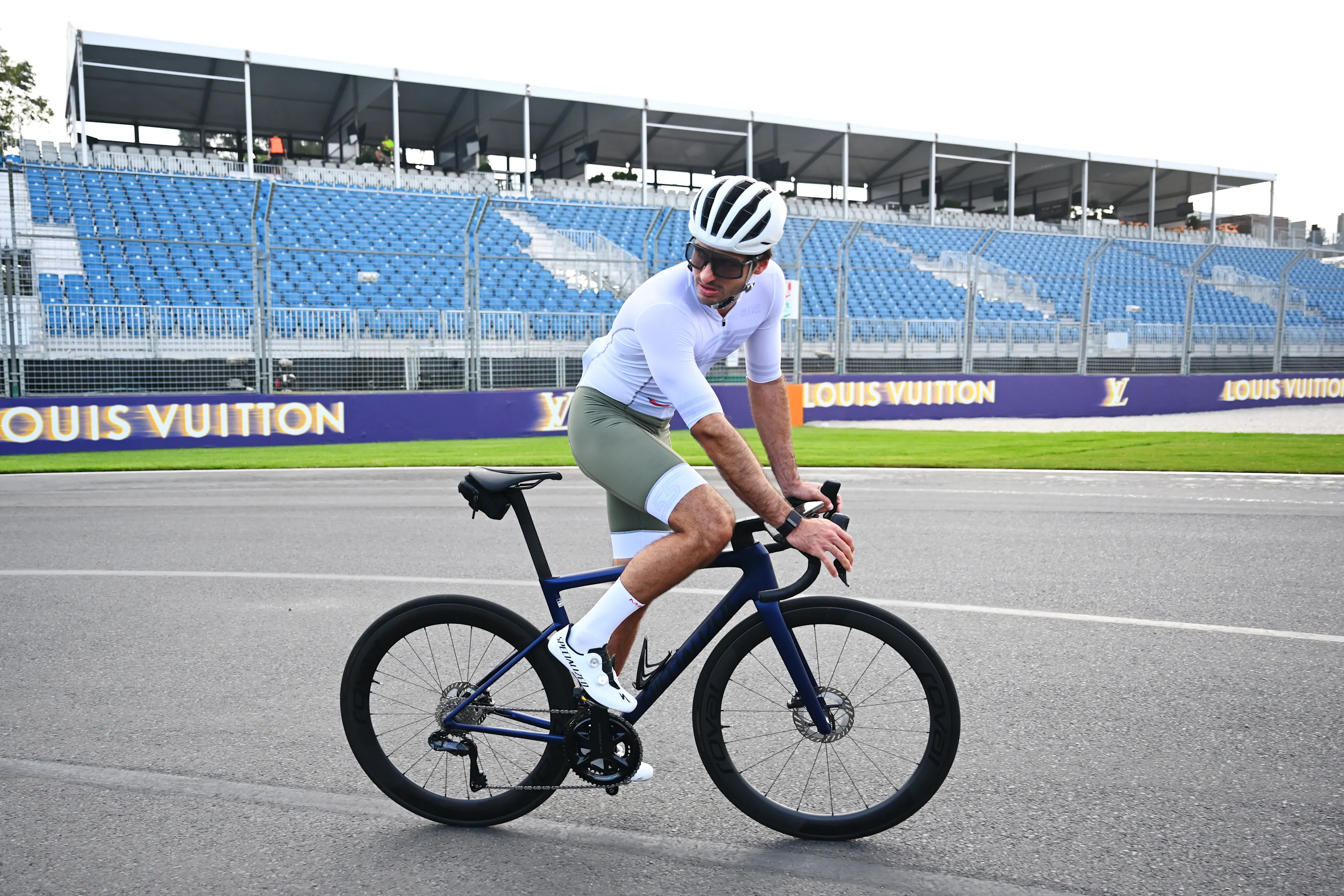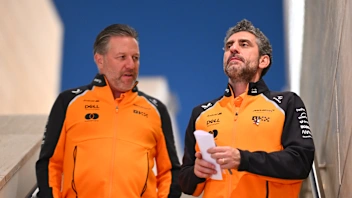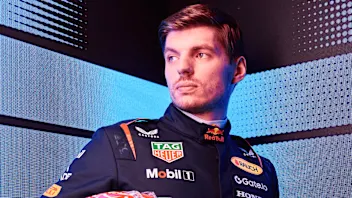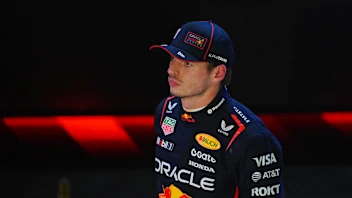How F1 drivers and teams recharge during the summer break
The F1 2025 mid-season break isn’t just time off, it’s a vital reset for body, mind, and team spirit. From recovery sessions and light training to hobbies, travel, and total mental switch-offs, the FIA summer shutdown shapes how drivers and teams return recharged for the championship fight when racing resumes in Zandvoort.
.webp)
If you’ve been following the F1 2025 season, you’ll know it’s been relentless. After the drama of the Hungarian Grand Prix, the sport now takes its one big breather of the year before returning to action at the Dutch Grand Prix in Zandvoort from 29-31 August.
This is what’s called the Formula 1 summer shutdown. It’s an FIA-mandated two-week factory closure for every team. No wind tunnels, no car development, no late-night simulator runs. It’s all about cost control, fairness, and giving everyone in the paddock time off.
Drivers don’t technically have to follow the shutdown rules, but most also take the chance to recharge. That doesn’t just mean lying on a beach – for F1, “recovery” is a cocktail of rest, training, hobbies, and smart preparation for the second-half charge toward the season finale.
Rest & recovery: The physical recharge
First things first: after Hungary, everyone exhales. For drivers, that might mean swapping the cockpit for a poolside lounger or catching up with friends over a quiet drink.
“A 24-race season means a lot of time away from home, a lot of travelling and hard work," explains Max Verstappen’s former performance coach, Bradley Scanes, speaking to the Red Bull website. "After a race, a few beers and a couple of days off is never a bad thing!”
Sleep is another crucial ingredient for muscle repair and mental clarity. Alpine rookie Franco Colapinto even shared a tongue-in-cheek Instagram montage of himself napping, proving downtime can be as important as time in the gym.
Meanwhile, Lando Norris took his break to the next level with a full “wellness day”, unwinding with spa treatments, good food, and catching up on quality rest as part of his mid-season recharge.
Still, they can’t completely stop. Low-impact sessions like swimming, recovery rides, stretching, and yoga keep bodies flexible and fit without adding strain.

And while the break is a chance to relax, there are some more intense elements of training that remain crucial for all drivers throughout the break.
F1 drivers’ and their trainers ensure that their powerful neck and core muscles – which are built to withstand 5 to 6Gs in corners while travelling over 300kph – still get targeted work to ensure they’re ready for the intense forces when racing returns.
That's also why drivers share such close relationships with their trainers, such as Lewis Hamilton and Angela Cullen as well as Lando Norris and his performance coach Jon Malvern.
Mental reset: Stepping out of the bubble
Life in F1 runs at full throttle, on and off the track. Back-to-back races, long-haul flights, constant media duties and sponsor commitments can wear down even the most focused drivers. That’s why the summer break is as much about mental space as it is about physical recovery.
Some teams, like McLaren, have woven mindfulness and mental coaching into their culture, giving drivers and staff the tools to manage stress and stay sharp. “Finding healthy ways to handle the stress and demands of these jobs is unique to each individual, but it’s up to the team to create an environment where those coping mechanisms can thrive,” McLaren explain on their website.
Others take a more personal approach. Lewis Hamilton often vanishes into nature, surfing or hiking far from the noise, while some drivers simply switch off their phones, steer clear of F1 headlines, and enjoy time with family and friends.
In recent years, the paddock has embraced more open conversations about mental health, allowing drivers and team members to prioritise well-being without stigma. The mid-season break is the perfect window for that reset, which becomes invaluable when the championship fight reignites at iconic circuits like Monza, Singapore, and Las Vegas later in the season.
Hobbies & passions beyond the track
The mid-season break gives F1 drivers the perfect chance to dive into passions beyond the cockpit, and they’re not always about speed. These aren’t just fun distractions, they provide creative outlets, keep competitive instincts alive in new ways, and give minds the space to recharge.
George Russell has called free-diving “a good way to disconnect from the craziness of F1,” while Hamilton is just as comfortable on the slopes as he is behind the wheel.
Padel, a fast-paced blend of tennis and squash, has also become a hobby for many drivers, offering cardio, reflex training, and friendly competition without the strain of full-on workouts. Championship rivals like Max Verstappen and Lando Norris have been spotted hitting the court, with matches often turning into light-hearted battles that build camaraderie as much as they sharpen skills.
Oscar Piastri jokes that a quick game of padel keeps him “more awake than coffee.” For drivers, it’s part workout, part social escape, and a fun way to recharge before racing resumes.
Off the track, their interests are surprisingly diverse: art collecting, golf, cycling adventures, music production, even beekeeping. Many hobbies also double as gentle training, helping them maintain fitness levels throughout the break.
Team shutdown: Behind the garage doors
For the teams, the FIA summer shutdown means absolute stillness, and that’s rare in F1. For two weeks, factories go dark. No wind tunnel testing, no meetings, no late-night calls about car upgrades.
It’s not just a rule, it’s a safeguard. Mechanics, engineers, designers, and support staff get the chance to take a genuine break, travel, or simply spend time at home without thinking about tyre compounds or aero tweaks.
The rule also keeps the playing field level. No team can sneak in extra development while rivals are resting. Speaking to Mercedes' website, the Silver Arrows' Chief Operation Officer Rob Thomas believes it’s “one of the best rules” in the sport because it forces a proper pause.
When the break ends, the teams return to the garage re-energised, ready to tackle the second half of the season’s toughest challenges.
The 2025 F1 mid-season break is more than a pause, it’s a vital reset for body, mind, and team spirit. From drivers diving into off-track passions to teams embracing the quiet, every moment of this downtime fuels the battles ahead. When the lights go out in Zandvoort, the break will be over, and the fight for every point will be fiercer than ever.

Next Up
Related Articles
 Brown and Stella admit McLaren 'made the wrong decision' in Qatar
Brown and Stella admit McLaren 'made the wrong decision' in Qatar Driver of the dayYour vote goes to Verstappen after crucial Qatar win
Driver of the dayYour vote goes to Verstappen after crucial Qatar win Ferrari 'did a worse job than the others' in Qatar – Vasseur
Ferrari 'did a worse job than the others' in Qatar – Vasseur OFFICIAL GRID: Who starts where in Qatar
OFFICIAL GRID: Who starts where in Qatar AS IT HAPPENED: Verstappen wins Qatar Grand Prix
AS IT HAPPENED: Verstappen wins Qatar Grand Prix.webp) Monday Morning DebriefDid Red Bull have more pace despite McLaren's error?
Monday Morning DebriefDid Red Bull have more pace despite McLaren's error?